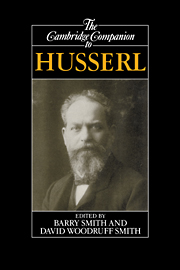5 - Perception
Published online by Cambridge University Press: 28 May 2006
Summary
ON THE DESCRIPTION OF PERCEPTION
Husserl seems to have devoted roughly equal amounts of energy and pages to the description of perception, judgement, and imagination. By “description,” he meant the analysis of the traits and components of mental states or acts and their objects. As his views changed over the years about the nature of intentionality and philosophy, the descriptive psychology of the Logical Investigations (1900/01) gave way to descriptive programmes in which the objects of perception and of judgement were conceived of in terms of a new, analytic framework; in particular Husserl lost interest in describing the things and processes in the real world that are the objects of perception and judgement and so too in describing their relations to these acts. His new analytic framework, particularly as it applies to perception, has been thoroughly expounded and discussed in the literature. My aim here is to expound Husserl's first descriptions of perception within the framework of the Investigations and to incorporate as far as possible his later descriptive results to the extent that these are separable from his later turn to idealism.
- Type
- Chapter
- Information
- The Cambridge Companion to Husserl , pp. 168 - 238Publisher: Cambridge University PressPrint publication year: 1995
- 59
- Cited by



